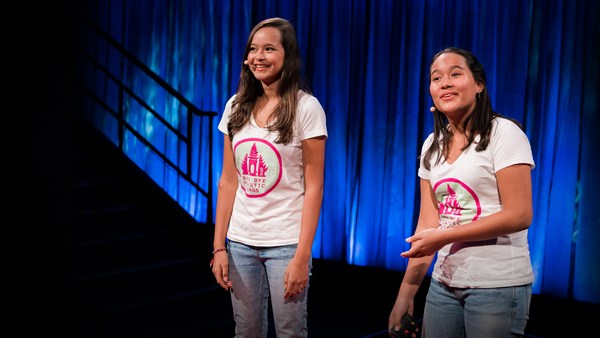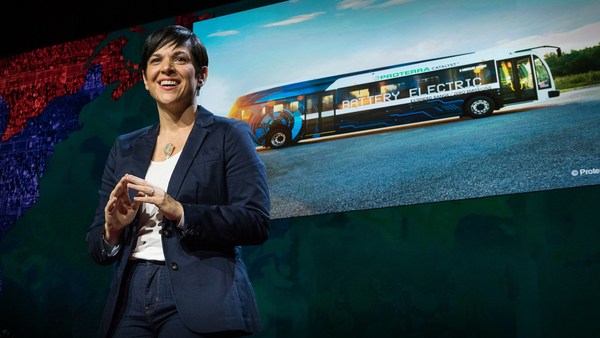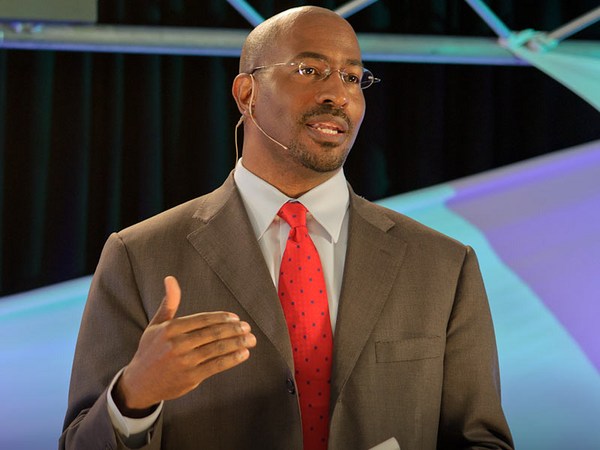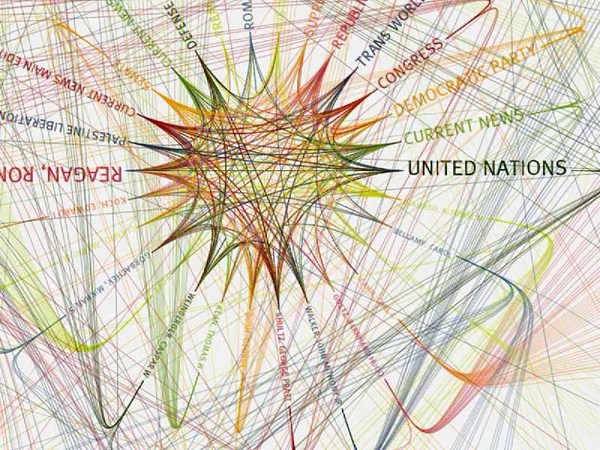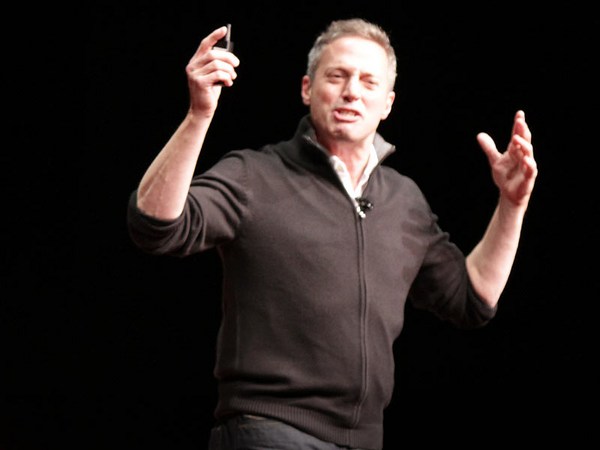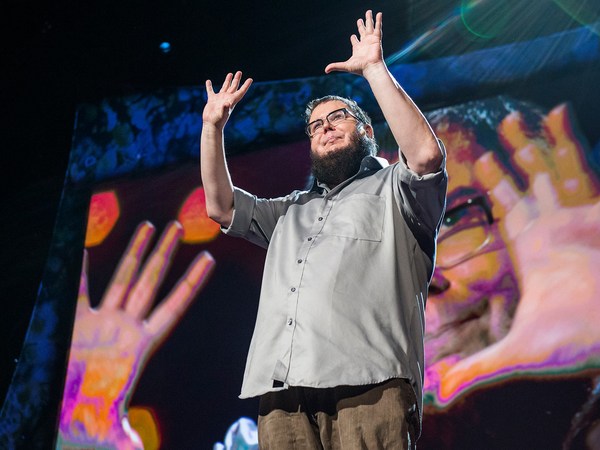This story starts with these two -- my kids. We were hiking in the Oakland woods when my daughter noticed a plastic tub of cat litter in a creek. She looked at me and said, "Daddy? That doesn't go there."
When she said that, it reminded me of summer camp. On the morning of visiting day, right before they'd let our anxious parents come barreling through the gates, our camp director would say, "Quick! Everyone pick up five pieces of litter." You get a couple hundred kids each picking up five pieces, and pretty soon, you've got a much cleaner camp. So I thought, why not apply that crowdsourced cleanup model to the entire planet? And that was the inspiration for Litterati.
The vision is to create a litter-free world. Let me show you how it started. I took a picture of a cigarette using Instagram. Then I took another photo ... and another photo ... and another photo. And I noticed two things: one, litter became artistic and approachable; and two, at the end of a few days, I had 50 photos on my phone and I had picked up each piece, and I realized that I was keeping a record of the positive impact I was having on the planet. That's 50 less things that you might see, or you might step on, or some bird might eat.
So I started telling people what I was doing, and they started participating. One day, this photo showed up from China. And that's when I realized that Litterati was more than just pretty pictures; we were becoming a community that was collecting data. Each photo tells a story. It tells us who picked up what, a geotag tells us where and a time stamp tells us when. So I built a Google map, and started plotting the points where pieces were being picked up. And through that process, the community grew and the data grew. My two kids go to school right in that bullseye.
Litter: it's blending into the background of our lives. But what if we brought it to the forefront? What if we understood exactly what was on our streets, our sidewalks and our school yards? How might we use that data to make a difference?
Well, let me show you. The first is with cities. San Francisco wanted to understand what percentage of litter was cigarettes. Why? To create a tax. So they put a couple of people in the streets with pencils and clipboards, who walked around collecting information which led to a 20-cent tax on all cigarette sales. And then they got sued by big tobacco, who claimed that collecting information with pencils and clipboards is neither precise nor provable. The city called me and asked if our technology could help. I'm not sure they realized that our technology was my Instagram account --
(Laughter)
But I said, "Yes, we can."
(Laughter)
"And we can tell you if that's a Parliament or a Pall Mall. Plus, every photograph is geotagged and time-stamped, providing you with proof." Four days and 5,000 pieces later, our data was used in court to not only defend but double the tax, generating an annual recurring revenue of four million dollars for San Francisco to clean itself up.
Now, during that process I learned two things: one, Instagram is not the right tool --
(Laughter)
so we built an app.
And two, if you think about it, every city in the world has a unique litter fingerprint, and that fingerprint provides both the source of the problem and the path to the solution. If you could generate a revenue stream just by understanding the percentage of cigarettes, well, what about coffee cups or soda cans or plastic bottles? If you could fingerprint San Francisco, well, how about Oakland or Amsterdam or somewhere much closer to home? And what about brands? How might they use this data to align their environmental and economic interests?
There's a block in downtown Oakland that's covered in blight. The Litterati community got together and picked up 1,500 pieces. And here's what we learned: most of that litter came from a very well-known taco brand. Most of that brand's litter were their own hot sauce packets, and most of those hot sauce packets hadn't even been opened. The problem and the path to the solution -- well, maybe that brand only gives out hot sauce upon request or installs bulk dispensers or comes up with more sustainable packaging. How does a brand take an environmental hazard, turn it into an economic engine and become an industry hero?
If you really want to create change, there's no better place to start than with our kids. A group of fifth graders picked up 1,247 pieces of litter just on their school yard. And they learned that the most common type of litter were the plastic straw wrappers from their own cafeteria. So these kids went to their principal and asked, "Why are we still buying straws?" And they stopped. And they learned that individually they could each make a difference, but together they created an impact.
It doesn't matter if you're a student or a scientist, whether you live in Honolulu or Hanoi, this is a community for everyone. It started because of two little kids in the Northern California woods, and today it's spread across the world. And you know how we're getting there? One piece at a time.
Thank you.
(Applause)
